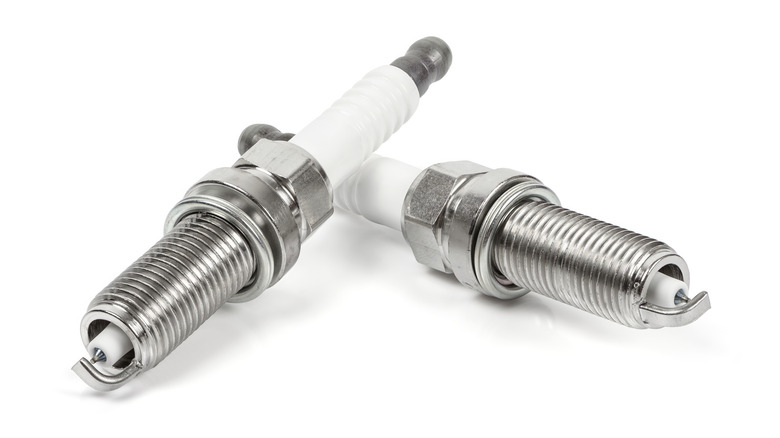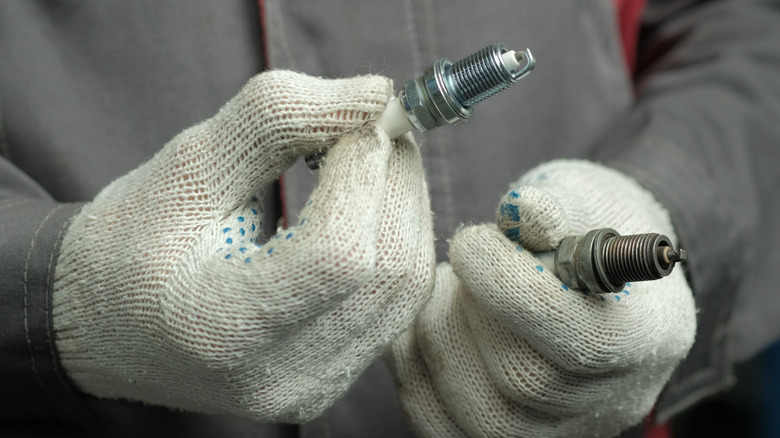What Is Spark Plug Indexing, And Is It Really Necessary?
In order for any internal combustion engine to function properly, you need three basic things: air, fuel, and spark. Air mixes with the fuel, providing an explosive catalyst. The engine compresses the mixture, which is then ignited when the spark plug fires.
This pushes the piston down, and we now have the miracle of a working engine. Sounds simple in principle, since all you need for that last step is to put the spark plug inside the combustion chamber and make sure it makes a spark, and you're good, right? Actually, the reality is slightly more complicated.
A spark plug sits inside a cylinder via a threaded hole, much like a screw. Virtually all production-level combustion engines function this way, but the process of seating a spark plug in a specific orientation, known as indexing, actually involves multiple steps beyond simply screwing the spark plug in. Still, you can simply screw a spark plug in and be done with it, and the car will run just fine; indexing is only actually useful for extracting slight amounts of performance and extra economy out of your engine.
Does indexing even matter, then? Generally no — you can usually just screw in and tighten the spark plug, perhaps by using this once-popular tool, and the engine will run fine. There are specific reasons why indexing is performed — one of those is to make an engine run as efficiently as possible. The potential dangers of improperly indexing outweigh the benefits in many cases. Let's dive in and explore the nuances and what exactly indexing does in your combustion chamber.
A more detailed look at indexing
The tip of a spark plug contains two electrodes separated by a small gap, like having two fingers nearly touching one another. These electrodes are made of different metals, often depending on whether you're using a cheap or expensive spark plug. This allows electricity to jump from one electrode to another, creating the spark. Much like your finger, however, the topmost electrode sits in a specific orientation, like an archway in a building connected on one side. What this means is that, as you screw a spark plug into an engine, that arm will spin around like a clock. The purpose of indexing is to make sure that arm is pointing in a specific direction.
Typically, this process is accomplished by fitting the spark plug with washers of varying thicknesses, meaning it'll only go so far down when it's fully tightened. The thicker the washer, the less rotation you'll have on the arm. The goal, then, is to have the open side of the spark plug facing towards the engine's intake valve or exhaust valve, so that when the air/fuel mixture is introduced, there's no obstruction between it and the spark.
To index a spark plug properly, first locate the intake and exhaust valve on your car, noting which you want to index towards. Next, locate the arm on the end of the spark plug and mark its direction with a marker so you have a reference point. And finally, seat an indexing washer on the spark plug and tighten it down, comparing the orientation with the mark until you're satisfied. Keep using washers of different thickness to change its final orientation.
Does it really matter?
In a broad sense of the term, yes, indexing spark plugs is a good idea and should be practiced. Beware, however; improperly indexing a spark plug, either by using a washer that's too thick or not tightening it down enough, can result in the spark plug backing out or not being deep enough into the engine to do its job effectively. Will it kill your engine if you don't index your spark plugs? No, it will not, but it's still better for your engine if you do so.
The inside of an engine is a turbulent, violent place. Air fires out of the intake valve and is ignited in milliseconds, meaning the electrode is quickly and consistently exposed to high temperatures. If the temperature is sufficiently hot enough, it could ignite the fuel on its own, known as pre-ignition; this is exacerbated when the arm is facing the direction of the heated air. Moreover, an overly-tightened spark plug runs the risk of hitting the top of the piston, damaging both components. Aside from these, however, it's mostly down to fuel efficiency.
The physics of how air works inside a combustion chamber is its own lengthy discussion, but the short answer is that the chamber is designed with a specific configuration in mind. Deviating from that won't necessarily harm the engine, but it won't be operating at peak efficiency, nor will it if you're running with bad spark plugs.


